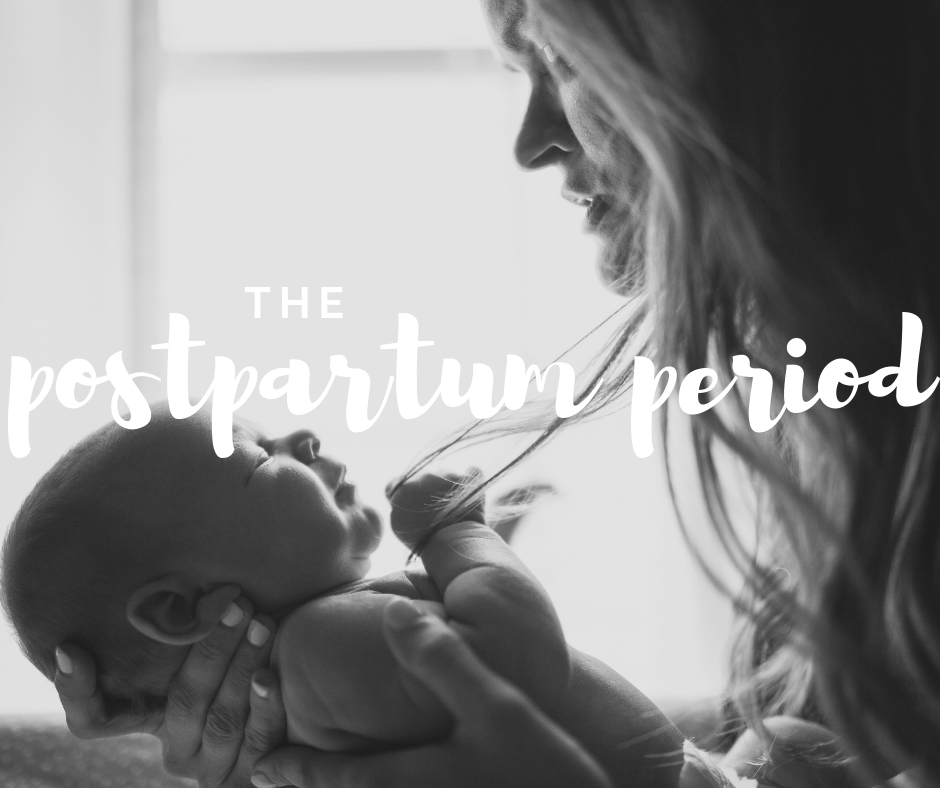What You Really Need to Know About the Postpartum Period

We know all too well how the postpartum period goes- after getting cleared to go home from the hospital, you have all the heart eyes for your new baby. At the same time, you’re navigating using giant maxi pads, mesh underwear, engorged boobs, and that beloved little squirt bottle to help you heal from whatever the heck just happened to you down there. Bleeding eventually subsides, and your doctor checks you at your follow up appointment about 4-6 weeks later. They give you the “all clear” to go back to exercise, so you head up to your favorite boot camp class the next day because you’re antsy to get the baby weight off.
You know this body is not quite the same as it was before baby, but you got the clear, so you keep going. Eventually you’ll feel normal, right?
Even though this is everyone’s experience, this guidance alone is not enough for women recovering from pregnancy and birth, whether vaginal or cesarean.
Your doctors only check to make sure you bleeding is cleared up and your uterus is back to normal size. What they are (usually) not checking you for is how your core and pelvic floor muscles are holding up after baby. They are not checking you for diastasis recti (abdominal separation) or how to move forward with that condition. They are usually not referring you to a pelvic floor physical therapist, unless you ask. Bless doctors…they really are amazing, and what they check for is completely in their scope of practice. As women, we need to know that there’s more assessment and evaluation we need before we just hop on over to Zumba class.
Labor and birth, although natural, are traumatic to the female body. Even if a woman “feels okay” at 4-6 weeks postpartum, she must honor the trauma that happened to her muscles, and seek rehab in order to avoid dysfunction. In the same way that someone who sprains their ankle would go to physical therapy in order to restore function to that ankle, a woman must be intentional with her healing process in order to restore function to her core and pelvic floor after baby.
For some women, this rehab is intensive and long. For other women, a simple check and smart guidance for a few weeks will work. It just depends on the woman, her body, the way she carried her baby, how big the baby was, and how her labor and delivery went.
Seeing a Pelvic Floor Physical Therapist
If you are experiencing any of these common (but not normal) symptoms, ask for a referral for a pelvic floor physical therapist to get clarity and guidance:
- Coning or doming of the abdomen during movements
- Leaking urine during running, jumping, sneezing, etc.
- Pelvic pain or soreness
- Pain during sex
- Pressure or feeling like a tampon is going to fall out during certain movements
- Constantly weak core
- Sensitive or numb C-section scar tissue
- Lower back pain
These symptoms are very common among women, and may even be laughed at as a “rite of passage” of motherhood. The truth is – these are common but NOT normal! If you are a woman experiencing any of these symptoms, whether you are 1 month postpartum or 10 years postpartum, you can get help. Seeking out physical therapy is a valuable step in addressing these signs of dysfunction. After therapy, working with a fitness professional who is trained in postpartum fitness can help you return to the exercise and workouts you love, without having to wear your black “pee pants” to class just in case.
Let’s Talk About It!
Most importantly, talking about these issues and no longer seeing them as inappropriate or taboo will bring so much healing to women. Postpartum fitness is not just about getting your “body back,” but rather finding function in this new version of our bodies. I always say- who cares that you fit into your skinny jeans if you’re just constantly peeing in them?













